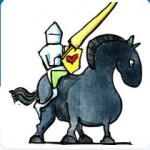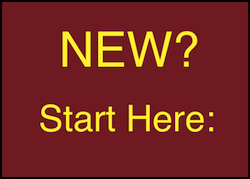Using the XP Tool for Encounter Building With Fifth Edition
By Rocky Helton
Creating fun encounters that your players will love and remember is a challenge unto itself. If the players were enjoying the challenges you were putting before them and then all of a sudden your overpowered baddie crashes through the town and kills them within one or two rounds you probably don’t understand how to build an encounter that challenges the players without brutally destroying them and the game (many a games have broken up after a TPK). There are several ways to build encounters in Fifth Edition and with the new XP Tool and your creative mind I’m going to show you how to make fun and challenging encounters that are a lot of fun to run and lets you focus on the game rather than the numbers. We’ll look at how to use the Experience Point Values Calculator Tool (XP Tool) to create your own challenging encounters without you having to worry about the numbers.
For starters, Wizards of the Coast has released the Dungeon Master Basic Rules and that is available for free on their website Here: (Wizards of the Coast, 2014) This document is a must for anyone that wants to run a Dungeon & Dragons Fifth Edition game and wants to write up their own stuff. Right now, this is what we have to work with and although the numbers are not finalized, they’re pretty close. This book starts with a brief explanation of the things that make up the monster statistics stat blocks and explains how things work, such as the new Lair Powers of very powerful creatures. Then it goes into a list of monsters. A lot of these are iconic, like the Ancient Red Dragon and the Blink Dog, and some are generic and great to fill in a role, like the Commoner or the Knight (more on him or her later). Then we have the Building Combat Encounters section where the XP Tool was made. This book concludes with a section on Magic Items and gives some examples of them. I’m going to delve into the encounter building a little further and help out someone who wants to create and DM their own story by giving lots of examples to make things even easier.
All the monsters/creatures have a Challenge Rating (CR) followed by how much XP that monster/creature is worth. The easiest way to do an encounter is to pick one creature based off of its Challenge Rating (CR). The way CR’s work is that a CR 3 monster should be a good challenge for a party of four level three player characters (PC’s). If you wanted to throw an individual monster at a party of four PC’s of level 3 then you might decide to use the Knight (Wizards of the Coast, 2014, p. 54) or a Wight (Wizards of the Coast, 2014, p. 50). If you’re creating an encounter using this method then just pick a creature like this then make sure the players will be the appropriate level when they eventually encounter this creature. Whichever monster you choose make up a quick backstory of why this creature is there and decide how they will encounter your chosen creature/monster. If you’re using the Knight statistics, CR 3 (700xp), you might choose a backstory such as Sir Blackblade has started a church to Bahamut as a front to corrupte the locals and turning them into cultists of Tiamat. If you were using the Wight instead her backstory may be that over 200 years ago the Queen found out that her husband, the King, had cheated on her numerous times with kitchen staff, maids and other servants of the keep and she felt unbearable pain that he would sleep with these “commoners”. She locked herself in a room while the castle staff banged on the door outside her room and killed herself, immediately turning into a Wight and wanting to slay any living thing that entered her chambers. Some creatures, like the Knight, have abilities that make them better when they are with others, such as his Leadership ability. Although that means he will be more powerful when he is encountered with multiple monsters there is no need to do so. You also don’t have to use a CR monster that is of the parties level but make sure you pay attention to the warning on page 56 regarding if you only pick a monster by its CR, especially at low level because a CR 2 monster can kill a level one character outright in certain situations. An easy example of this is a Bugbear (CR 1-200 XP) when it surprises someone can do anywhere from 6-30 damage (if you are rolling for damage or 18 if you’re using the average damage values). That means a first level fighter with 12 hit points without a critical could be surprised by the bugbear and be killed outright by reaching his negative maximum hit points in one shot. That’s not to say not to use it but as you gain more experience you will understand situations that will make something a little more deadly.
The next way to build an encounter is to use the Encounter Difficulty XP Per Character chart as well as the Encounter XP Multipliers Chart, both listed on page 57. There are directions on that same page regarding how to use these two charts but you don’t need it with my XP Tool. All the math has been done for you. If all of your characters are the same level then put the number of PC’s into the XP Tool (Cell B3) and then copy the Easy, Medium, Hard and Deadly XP Values from the bottom chart to Cells B6-E6. So if your four PC’s were level six you would put a 4 (number of PC’s) in Cell B3 and copy Cells B27-E27 into Cells B6-E6. The top right chart will look like this:
| Number of PC’s= | 4 | |||
| Lower end of multiple monsters | ||||
| Easy | Medium | Hard | Deadly | |
| Encounter Difficulty XP Per Character= | 300 | 600 | 900 | 1400 |
| Party XP Budget= | 1200 | 2400 | 3600 | 5600 |
| Single Monster | 1200 | 2400 | 3600 | 5600 |
| Pair (2 Monsters) | 400 | 800 | 1200 | 1867 |
| Group (3-6 Monsters) | 200 | 400 | 600 | 933 |
| Gang (7-10 Monsters) | 69 | 137 | 206 | 320 |
| Mob (11-14 Monsters) | 36 | 73 | 109 | 170 |
| Horde (15 or More Monsters) | 20 | 40 | 60 | 93 |
Let’s look at an idea we had for four 6th level characters. They will walk into a room with armor lining the walls. Closer inspection reveals that the room is covered in dust but the armors appear to be well polished. When a PC gets close to one of the armors to inspect it further, or maybe even try it on, the Animated Armors attack. I want this to be a medium encounter so I look at the Animated Armor statistics. (Wizards of the Coast, 2014, p. 9) It is a CR 1- 200XP monster. Look at the chart above and see where the 200 (the amount of XP for one Animated Armor) is, it would be an Easy encounter if I used three. We want a medium encounter so if we look at the chart on the right (the upper range of monsters) then we will have the following:
| Higher end of multiple monsters Deadly | ||||
| Easy | Medium | Hard | ||
| Encounter Difficulty XP Per Character= | 300 | 600 | 900 | 1400 |
| Party XP Budget= | 1200 | 2400 | 3600 | 5600 |
| Single Monster | 1200 | 2400 | 3600 | 5600 |
| Pair (2 Monsters) | 400 | 800 | 1200 | 1867 |
| Group (6 Monsters) | 100 | 200 | 300 | 467 |
| Gang (10 Monsters) | 48 | 96 | 144 | 224 |
| Mob (14 Monsters) | 29 | 57 | 86 | 133 |
| Horde (15 Monsters) | 20 | 40 | 60 | 93 |
So from this chart we can see that six of our 200XP monster will be a Medium encounter. That’s what we were looking for, so when the players walk into the dusty room they will see six well taken care of pieces of armor and a door to the North (if they’re coming from the South). So if the characters interact with an individual piece of armor then the encounter starts or if a character passes the center of the room (probably on their way to the North door).
By printing off this chart though you can figure up different levels of encounters quickly while at the table. So say the characters rolled poorly on the encounter prior to this encounter and I want it to be an Easy encounter instead. I find the 200 in the Easy column and determine that instead of six Animated Armors I will be using only three. We can go the other way though, what if the characters had just completed a long rest and they have all of their spells and powers back and I want this to be a Hard challenge instead. I would use the Gang (7-10 monsters) stats and see that it is on the left chart so it is calculated on the lower end of multiple monsters (so 7) monsters worth 206XP each would be Hard. So if I throw seven or eight at them then I now have a Hard encounter.
The final chart we’re going to use is the XP Per Adventuring Day Per Player Character (Wizards of the Coast, 2014, p. 58) chart. If you are running multiple encounters and there will be no resting between encounters then you will want to familiarize yourself with this chart. If you use the XP Tool you can adjust encounters on the fly so you won’t need to use this chart and you can pretty much just eyeball it.
So your life as a DM should be easier with this XP Tool and you should be able to use your skills to read a chart and be able to adjust a whole lot easier on the fly at the table. I suggest you input the number of PC’s in your party and the encounter XP values into the chart and then print it off with everything filled out so you have a handy game aid to help you build or adjust encounters quickly behind the DM screen. You’re welcome!
XP Per Monster Calculator Tool
Works Cited
Wizards of the Coast. (2014). Dungeon Master’s Basic Rules Version 0.1. Hasbro.







